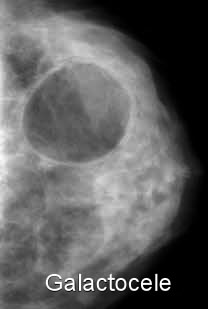
Galactocele: what it is and how it can affect breastfeeding
A galactocele is a benign process that can occur during breastfeeding and appears as a lump in the breast.
What is a galactocele, and why does it appear?
A galactocele is an accumulation of lipid material from breast milk outside the mammary ducts. A small cyst is formed, which is retained within the mammary stroma and has no exit to the nipple. It can be of variable size and can appear in any area of the breast.
It can appear during lactation or, more likely, when weaning and stopping breastfeeding because milk gets retained and “stagnates” within the mammary ducts. Although it is not well known, the appearance of galactocele is actually the most common benign lesion during lactation.
How can you identify a galactocele?
To know if the swelling is a galactocele or another complication, we can assess the following:
- There is no change in the size of the lump after feeding from the breast.
- There is no fever.
- There is no erythema on the breast.
- There is no joint pain or prostration.
- There is no pain when breastfeeding
The recommended diagnostic tests to check whether it is a galactocele or not are an ultrasound scan and/or exploratory mammography.
Can a galactocele affect lactation?
Depending on the location of the galactocele within the breast, it may affect lactation, or it may not affect lactation at all.
If the galactocele is located away from the area of the areola and nipple, it will not affect the outflow of milk through the ducts, so it will not cause any inconvenience during lactation. If it is located in the nipple/areola complex, it may hinder milk ejection and slow down the flow, which may disturb the baby.
Apart from the detail of the location, having a galactocele does not affect breastfeeding in any other way. A galactocele is not dangerous, although it can be uncomfortable.
What to do if a galactocele is detected
If the galactocele is large, located in the anterior part of the breast, and also compromises milk flow through the nipple, ultrasound-guided fine needle aspiration (FNA) can be performed to remove the accumulated lipid material. Sometimes, they may refill and need to be re-drained.
If, on the other hand, it does not compromise lactation, it is possible to wait until the end of lactation to remove it or let it disappear on its own.
References
Halls, S. (2019, 20 septiembre). Galactocele of the breast. Common benign – Moose and Doc. Breast Cancer – Moose And Doc. http://breast-cancer.ca/galactoceles/
Lawrence, R. Breastfeeding: A Guide for the Medical Profession. 2022. Elsevier, Philadelphia, PA.